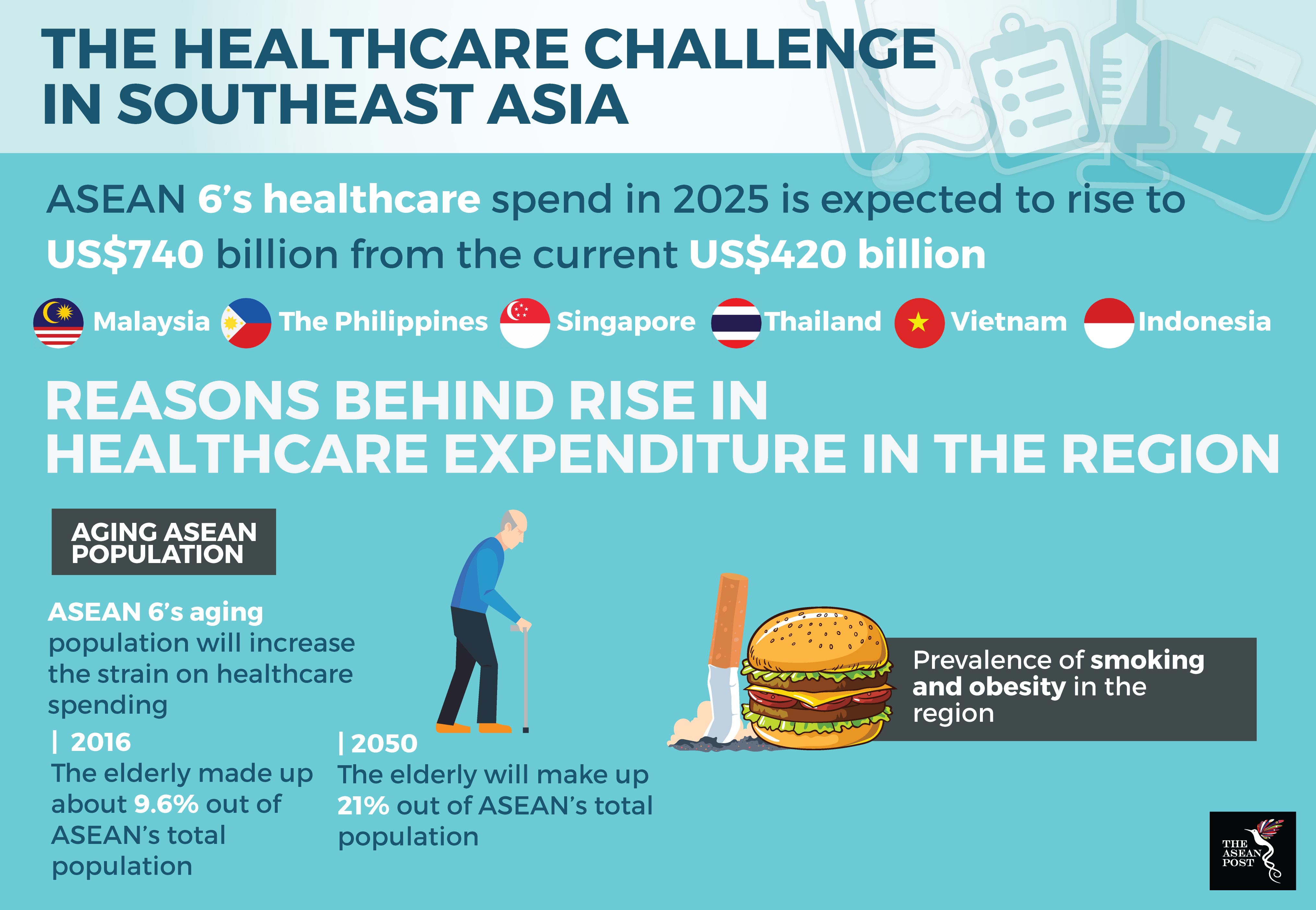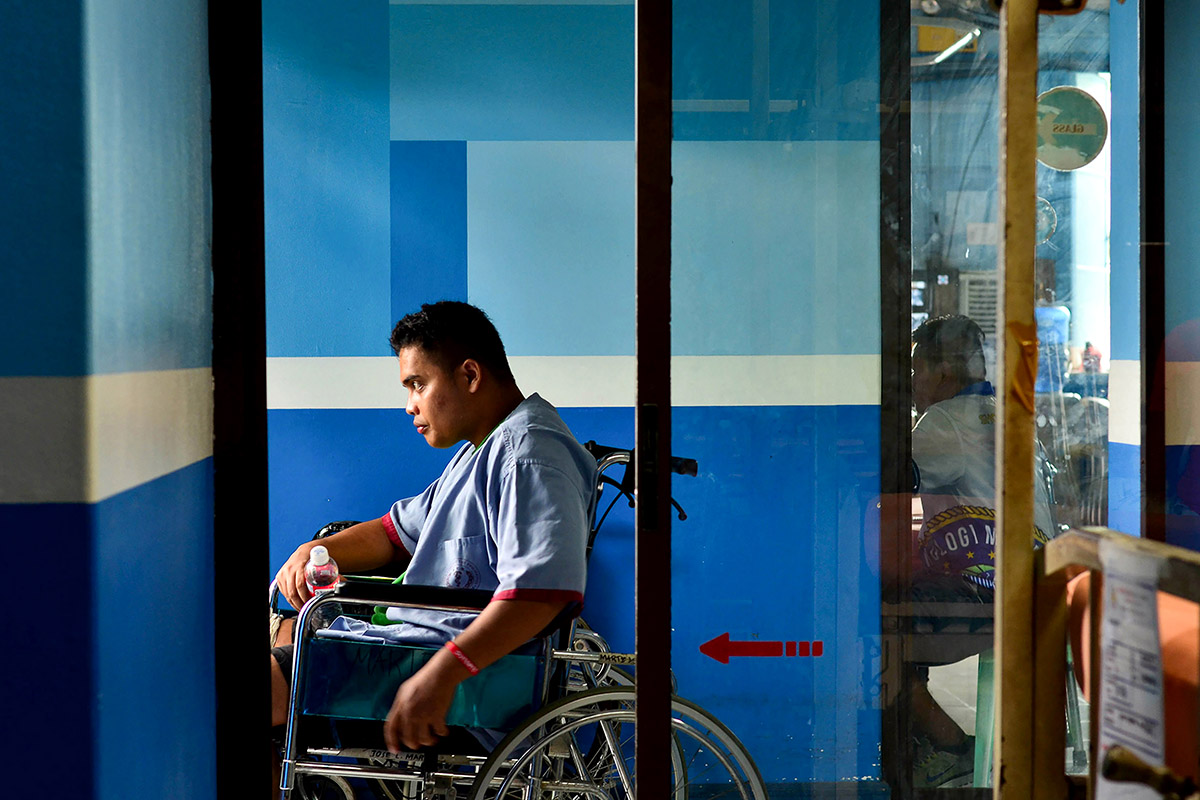Healthcare costs in the region are forecasted to spike in the coming years, according to research carried out by Solidiance, an Asia-focused corporate strategy consulting firm. Titled “The US$320 billion healthcare challenge in ASEAN”, the study focuses on the healthcare economy of six major Southeast Asian countries – Indonesia, Malaysia, Singapore, Thailand, Vietnam and The Philippines – dubbed the ASEAN 6.
Data from Solidiance shows that healthcare spending for the ASEAN 6 is forecasted to increase to US$740 billion in 2025 up from US$420 billion spent in 2017. A US$320 billion increase in spending in under less than 10 years could have adverse effects on the economy and standard of healthcare in these six countries.
At the moment, healthcare spending across the ASEAN 6 has already outpaced the economic growth of these nations. For example, Malaysia’s gross domestic product (GDP) per capita in 2017 is US$91 but the health expenditure per capita there is US$105. Singapore has the largest gap between health expenditure per capita and GDP per capita among the ASEAN 6 nations. Singapore spends US$142 on healthcare per citizen despite having an economic growth of US$98 per capita. On the other hand, Indonesia has the smallest gap between the two, with US$103 spent on healthcare per capita and a GDP per capita of US$101. Indonesia also spends the least for healthcare per capita. However, this is not necessarily a bad thing, as healthcare spending outpacing growth is a sign of maturing economies in the developed world.

Among the reasons why healthcare costs are increasing rapidly is due to the aging population of the region. In their study, Solidiance mentioned that almost all ASEAN 6 nations today show either negative or close-to-zero growth for the youngest part of their populations (ages 0-14). Data from the Asian Development Bank (ADB) also reinforces this fact. ADB says that by 2050, persons aged 65 and older will make up 15% of the population, tripling the 2010 percentage of 4.8%. In Singapore, the aging population is already having an impact on welfare and healthcare spending as the government there has introduced a goods and services tax among other taxes to help ease the burden of spending on its aging population.
Aside from that, the prevalence of smoking in Southeast Asia is also a contributing factor to the increasing costs of healthcare. Southeast Asia is notorious for lax regulation on tobacco companies and has among the highest rates of smoking in the world. Health issues surrounding obesity and being overweight is also thought to contribute to the growing expenditure of healthcare.
With healthcare expenditure on the rise in the region, governments and the private sector need to take this opportunity to rethink the system and implement reforms and changes before it’s too late.
First of all, governments need to allocate more of their GDP to the healthcare sector. The World Health Organisation (WHO) recommends that a country should allocate at least 7% of its GDP to the healthcare sector. However, latest data from the World Bank shows that every country in the ASEAN 6 does not even reach the world average of spending 6% of GDP on healthcare. However, this doesn’t really solve the problem. Increased spending may help the healthcare sector but governments also need to figure out how to fund such spending.
Moving forward as healthcare spend is expected to rise, new sources of healthcare funding is necessary. One idea is to increase taxation on unhealthy goods such as fast food and cigarettes, among others.
Aside from that, money could be saved with the introduction of technologies in hospitals. With technology advancing every day, hospitals could invest in technologies that could carry out the work of non-patient facing staff. This way, hospitals spend less on hiring new staff, particularly non-patient facing staff such as administrators and such.
Finally, governments and hospitals should focus more on effective treatments that avoid future costs. Intervention at the early stage is key, and if more focus is put on prevention and providing effective early treatment, more spending in the future would decrease. As the saying goes, prevention is better than cure.
Now is the opportune moment for ASEAN governments to improve their healthcare systems. As ASEAN countries aspire to become fully developed nations, they need to remember that a strong healthcare system is a pillar of a developed nation.
Content for this article is provided by Solidiance. For the complete white paper, please click here
